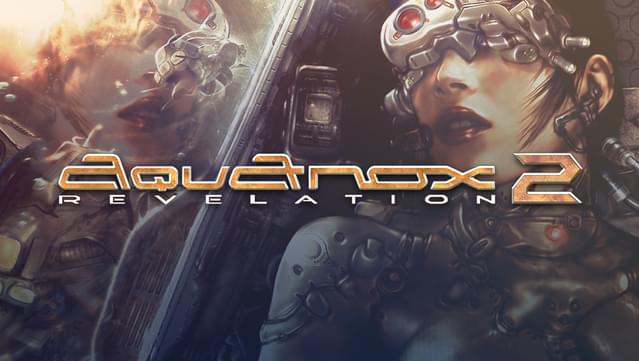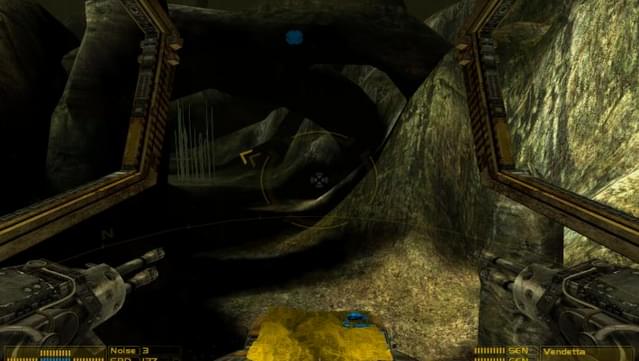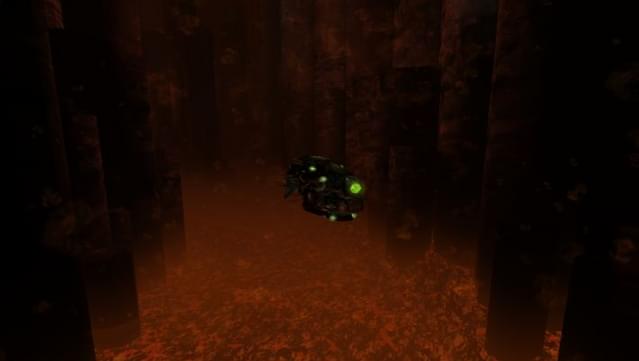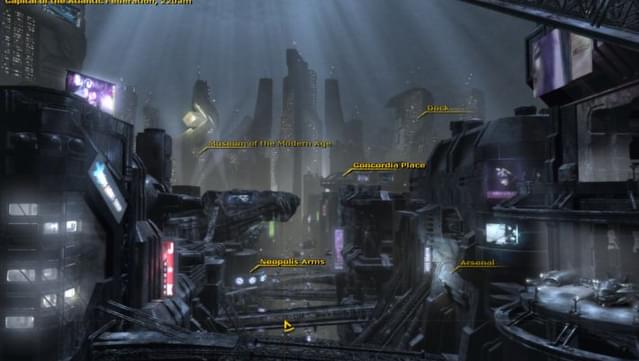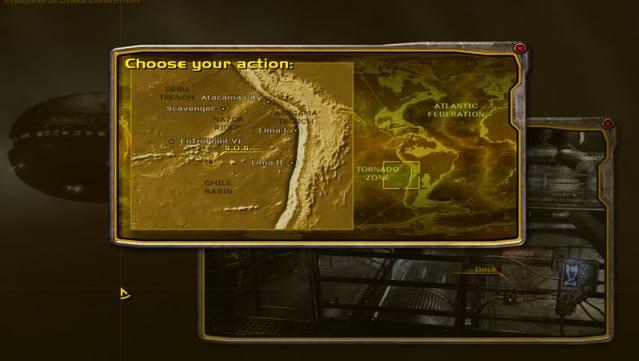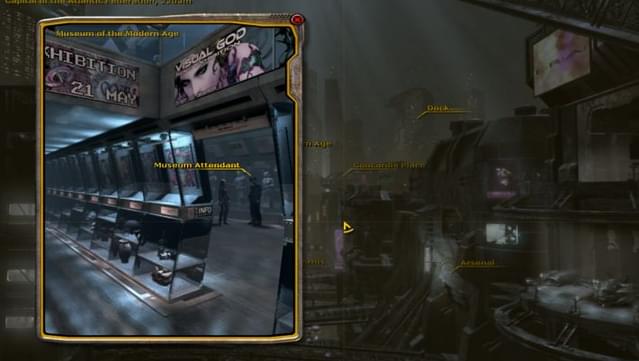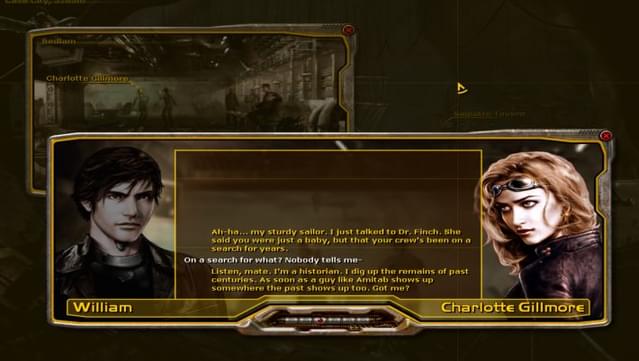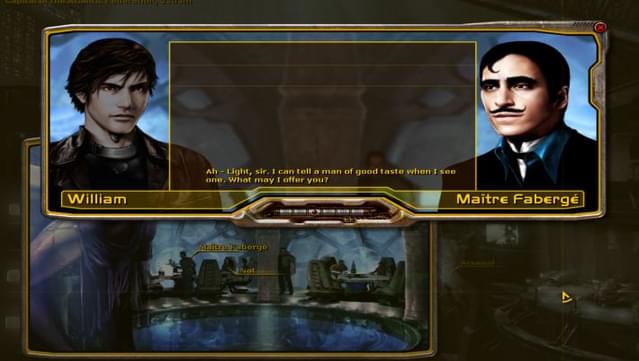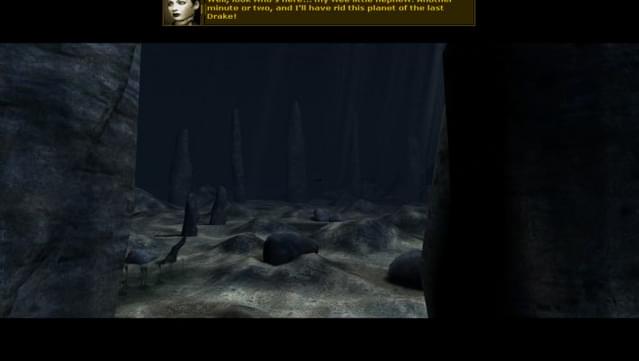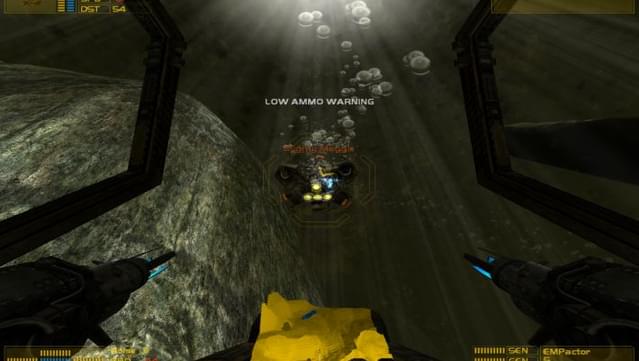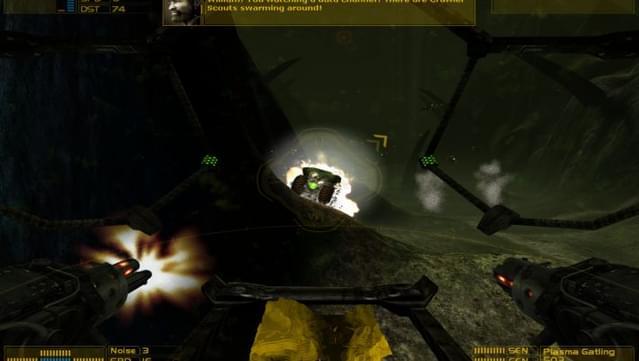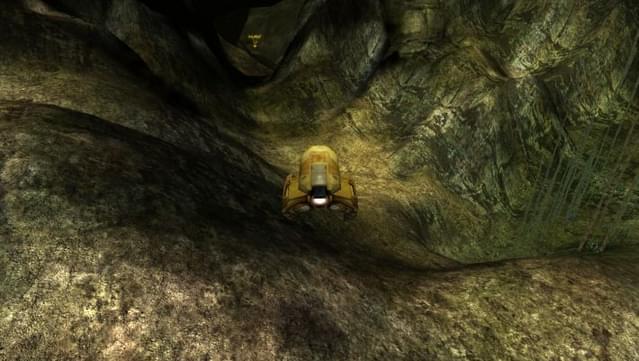Posted on: January 13, 2011

Curunauth
Verified ownerGames: 1226 Reviews: 23
Unique and Fun
Back when I reviewed Aquanox 1, I said "I feel a bit bad giving it a 3, but it just hasn't earned that 4. Still, I'll buy AquaNox 2 if it goes on sale," and I'm glad I did. Aquanox 2 is a strict improvement on the first game, reducing or eliminating most of the irritations of its predecessor, as well as offering more overall polish. VISUALS: I thought Auquanox 1 had aged well, thanks in great part to good use of textures; Aquanox 2 is a definite visual upgrade, with everything using more polygons, crisp textures, nicer lighting, and much cleaner effects. The improved sharpness solves the issue of vision being obscured by weapon flare in crowded combats, but clearly seeing torpedoes and weapon trails from 20 ships preserves that great hectic feel. The strong styling of each faction is preserved, and the upgraded models look excellent. One thing I didn't really notice until I returned briefly to the original is that the HUD is *tremendously* improved. Not only is it sharper and more attractive (as the game is designed for higher resolutions), but it is also far more useful. Instead of spreading your armor indicators around the periphery and splitting up other data, each corner has a unified group of critical data: all your vital stats, all the tactical info on your target, and your weapon/buzzers/subsystems are each available at a single glance. There is now ample room to have your local 3d map up at all times, significantly aiding navigation. Most water is clear enough that your visual range slightly exceeds your map, which means that it pays to actually keep your eyes peeled! CONTROLS: As before, you have an odd set of 5 degrees of freedom: three axes of linear movement, pitch up and down, and banking (instead of simply yawing [turning] left and right, you roll and pull upward to turn, with a tunable degree of automatic leveling). I guess the rolls make it feel more simulator-y, but the implementation is rough and it interferes with aiming. Aquanox 2 adds an "FPS mode" toggle, but that didn't seem to make circle-strafing more possible. The problematic vertical axis through which you can't rotate (you can never roll or flip so far that the floor is "above" you) is much better here than in the first game - aiming at a moving target above or below you is still a bit rough because the auto-leveler will swing you around, but tracking a target as it passes over or under you is much cleaner than before. The control scheme does take some getting used to, even if you're a veteran of 6DOF games like Descent. As the game progresses, you may find that maneuvering skills adequate for one enemy type are insufficient to defend against new enemies, and you will of course benefit from tuning your movement style to the strengths of your current ship. This means that there is a continuous learning curve to the game, at least on your first playthrough. Due to this, I wouldn't recommend the game to someone looking for quick lightweight simulator fun. That said, the ships generally feel more responsive than those in Aquanox 1, with the caveat that there is more noticeable handling difference between the heavy and light ships than before. Although there is still a sometimes disappointingly low ceiling, more vertical space is available than before, and vertical positioning has a much stronger tactical role in combat. I found myself using both terrain features and the bodies of capital ships significantly more in this than in it its predecessor, and that really improved the feel of underwater freedom of motion. STORY/ACTING: This was possibly the biggest downfall of Aquanox 1: the grating voice acting that made me want to murder several wingmen and made me fear their talking more than the wasted effort when I had to replay a level. Thankfully, that has been completely fixed. There is still radio banter between the skipper and your wingmen, but it is always related to the current action, no one has a fingernails-on-chalkboard voice, and the delivery is generally decent. This alone is the single most important improvement in the game. The story is odd but somewhat interesting, opening with a hijacking by a crew whose motives are uncovered over the course of the game; in another vast improvement over Aq1, there are no more droning plot summaries by the protagonist as you travel from area to area. The unstructured list of people to talk to in each port has been replaced by a selection of locations on your base ship or in ports, each of which may have several people to talk to at any given time. This takes a bit more time, but pays off by being more engaging, particularly because each location has actual art including people, even though most locations don't change in appearance when different people are present. The voice acting is nothing special, but the primary characters all get distinct personalities that are communicated effectively by the actors, and again, none of them are painful to listen to. If you want, you can quick-skip any conversation and just jump from battle to battle. All that said, there are still a couple problems. First, the long opening and ending videos, while interesting, seem to have extremely little relation to the plot of the game, but this is a very minor issue. Second, there is a romance sub-plot that will railroad you along a path that has obvious bad consequences and is likely to disagree with your own leanings. This really ticked me off, even though I suppose it fit the characters. DIFFICULTY: As with Aquanox 1, the unusual controls and wobbly turning may be an issue, but they're acceptable once you get used to them. Again, those used to flight sims will lament the lack of a lead indicator. Repeating missions from the start can be frustrating, but I mostly found it to be a nice challenge that enhanced the tension of later stages. Getting hit by a sniper in most games merely causes a reflexive quickload, while here it creates an adrenaline rush as you struggle to stay alive and complete the suddenly-desperate mission. Furthermore, ridiculously long missions with multiple really hard segments (the kind that make you curse the lack of checkpoints) have been eliminated. I therefore count this as a bonus; if you're having trouble, you can always lower the difficulty rating. Bonus objectives make for an interesting twist on gameplay: although many are merely "find a hidden freighter", a few are rewards for showing extra skill or doing more dangerous things in combat. It is irritating that you are not told what the objectives are, but you are often given hints in radio chatter - in general, paralyze any freighter you see, defend any target being attacked by pirates (especially when the skipper tells you to ignore them!), and hunt down any enemies that remain after the mission ends. Some bosses have allies that flee when he dies, which usually means there is a bonus for eliminating them first. Alternately, if his allies don't flee, you may get a bonus for taking out the boss first, which can ramp up the difficulty a lot. On several occasions the skipper offers a bounty for the pilot who destroys a particular high-value (and high-danger!) target, throwing you into a contest with your wingmen, which is rather fun. There seem to be no complete lists of bonus objectives on the 'net, so I'll make a forum post of the list I built from archived pages and a bit of exploration. As with the previous game, difficulty can vary extensively and there are a few really hard missions. The harder "boss fights" are generally either standalone duels or are front-loaded so that you don't have to repeatedly replay tedious sections only to die at the end. There are a fair number of "protect the Harvester" missions, but even on high difficulty she's a sturdy ship and will generally survive as long as you don't wander away from combat for too long. Sometimes there are critical targets that need to be destroyed in small time windows to achieve protection, but once you get the hang of this, it's not too bad, just challenging. Many protection missions include a full complement of wingmen, allowing some amount of teaming up and assisting in keeping up the pressure when you get bogged down in a dogfight. Allies are tough but worth aiding occasionally, as they are not invicible. Fortunately, they don't die, instead leaving combat for repairs when their armor reaches critical levels. This allows huge battles to happen without being overwhelming, and the final big battle is a both a great set-piece and a lot of fun. A word of advice: there's more than one way to deal with a squad of heavy bombers! LEVELS, STRATEGY, and OTHER ELEMENTS: As noted above, level design has been much improved by pretty much eliminating long missions ending in extremely hard parts, and chopping several fights into two missions to isolate the really hard parts. This deals with the painful parts of a no-quicksave, no-checkpoint structure. Completing bonus objectives will net you some nice loot including some unique upgrades that can really make a difference in some missions, but you can do without them and will have acquired a pretty full complement of weapons by the end of the game no matter what. EMP weapons are more widely used this time (and feel less forced), although don't believe the manual or Fuzzyhead about being able to salvage anything you disable - only specific bonus targets will grant salvage (there are, however, over a dozen such goodie bags). Sparing the lives of several major characters will not only give you a bonus but result in bonus missions later in the game, which I thought was a very nice touch. Early on, EMP may be your strongest weapon against a few high-armor targets, and the second-generation EMP missiles available in the late game can one-shot most enemies. I actually used almost every weapon in the game at least several times, as each has a useful tactical role to play, making gun and upgrade load out a nice tactical consideration in addition to your torpedo selection. You only have access to 4 ships in the game, all provided by the plot, but they feel better differentiated than the options in Aq1, and your newest ship is not always the best choice. Finally, the replay value is significantly enhanced by a vastly improved "instant action" selection including every game mission (unlocked as you beat them), as well as the provision of 40 save slots (there are 33 missions) - you can therefore replay anything with your own arsenal, or with a preconfigured ship. In addition, every major character you beat becomes unlocked for a one-on-one duel, culminating in a battle-royale series of all of them. There are also 8 "training" missions, several of which are quite large (and challenging!), and one of which involves fighting waves of almost every enemy in the game (with helpful regenerating ammo). THE VERDICT: Aquanox 2 fixed or at least improved on all the aspects that forced me to give its predecessor a 3, and has certainly earned its 4. It could use more work (particularly in tightening up the controls), but it has no glaring flaws left, and it's quite fun once you learn to play well. Different classes of enemy move and behave differently, and thus require different tactics to come out on top (as do large battles vs small dogfights); this really makes the game much richer and keeps you on your toes as the game progresses. I was particularly impressed with the execution of protection missions (so often a source of pain) and the great feel of large-scale battles, and the "boss fights" were never gimmicky find-the-weak-spot puzzle bosses, just extra-tough ships with good pilots and escorts. If you like space combat sims, it would be worth giving a spin for its unique feel. [Oh, a final note of warning: the game saves .tga screenshots, which chew up disk space quickly (~6.5MB/shot at 1920x1200).]
Is this helpful to you?

